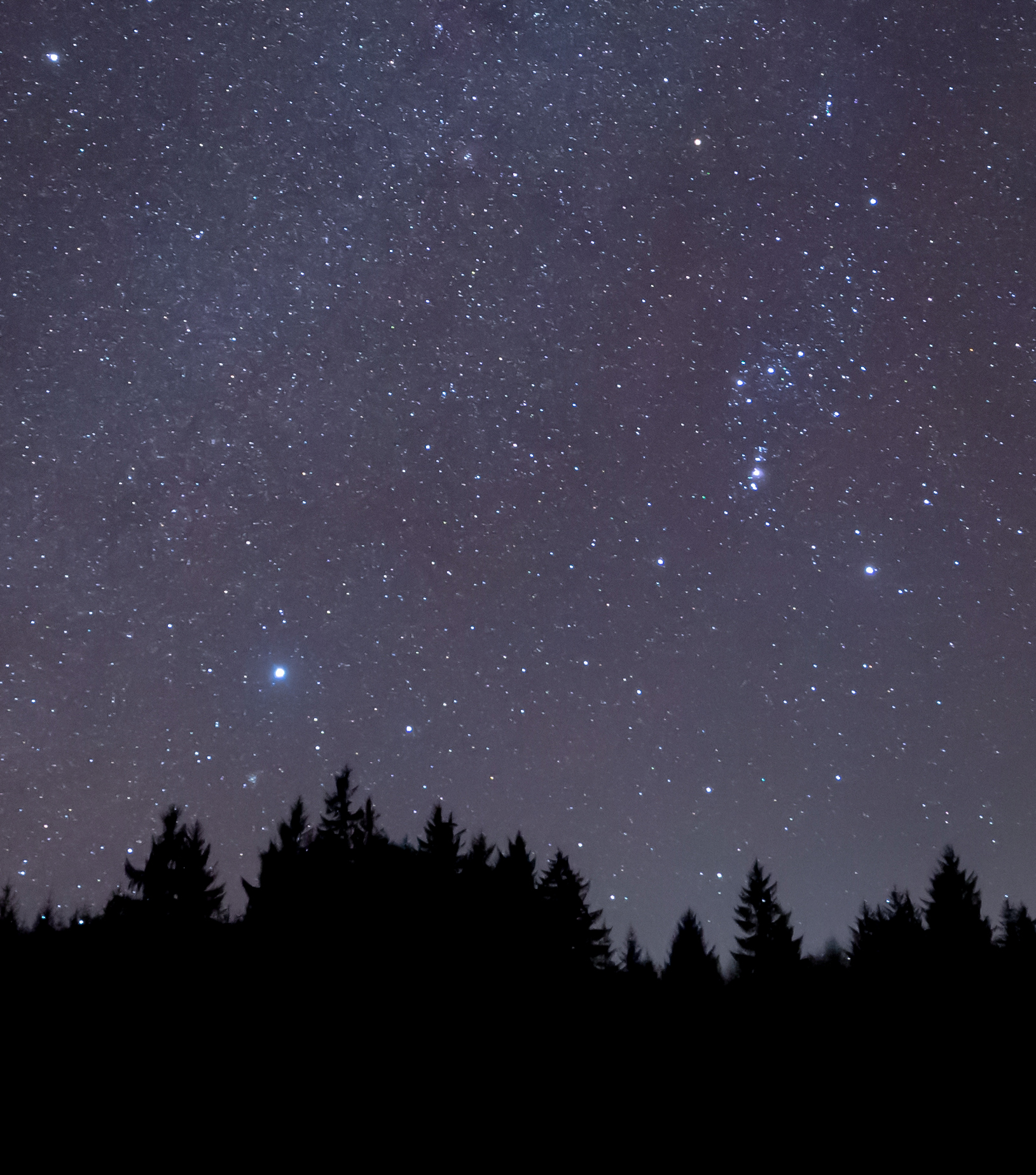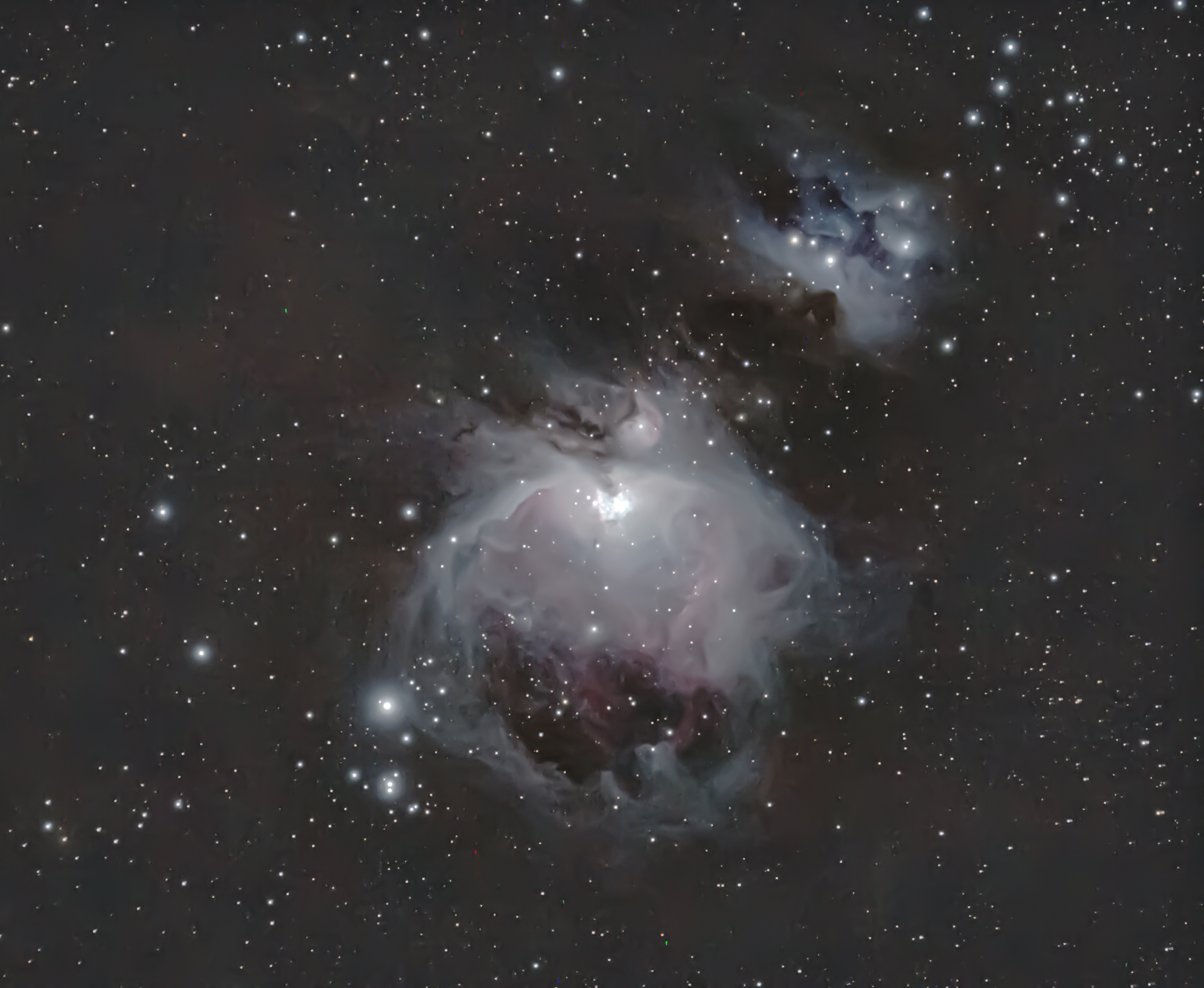Happy New Year!
2021 brings a host of exciting celestial sights, so join us each month to find out what you can see in our night skies.

The winter night sky is a fascinating reminder of the vast distances to the celestial objects we can see. Sirius, whose name derives from the Greek word for ‘glowing’, is the brightest star in our night sky. It is nearly twice the size of our own Sun, and sits just eight light-years away, a very close neighbour relative to other objects we can see in the winter night sky.
Did you know? At the speed of light, you could travel around the Earth over seven times a second! A light-year is the distance that light travels in a single Earth year - approximately 9.7 trillion kilometres or 6 trillion miles.
The brighter stars, however, are not necessarily closer to us. The distance to Orion’s bright red giant star Betelgeuse is difficult to measure exactly, but it sits around 500 - 700 light-years away, while the distinctive three stars of Orion’s belt, Alnitak, Alnilam and Mintaka, and the nebula of Orion’s sword, are all around 1,300 light-years away.
All of these objects are relatively close, however, when we consider that our Milky Way galaxy spans a vast 100,000 light-years across, and as you may remember from the October blog, one of our nearest galaxies, Andromeda, sits 2.5 million light-years away, and we consider that to be close by galactic standards!

Did you know? Our colleagues at the European Space Agency have plotted the movement of the stars in the constellation of Orion over the next half a million years or so. You can find it at: esa.int/Science_Exploration/Space_Science/Gaia/The_future_of_the_Orion_constellation
The Planets and the Moon
Following their spectacular conjunction in December, Jupiter and Saturn now start to move further apart, continuing to drop lower to the horizon, sooner after sunset. Their apparent movement towards the Sun is the effect of Earth progressing on its orbit around the Sun much faster than the outer planets. By the end of the month, we will be passing around the opposite side of the Sun to the gas giants, and by February, the two planets will re-appear in the morning skies, as we start to catch them up again.

Before then, observers looking for a challenge might be able to spot them along with the planet Mercury through the first half of the January, low to the horizon in the south west shortly after sunset. Sharp eyed observers might spot a 3% illuminated Moon to the left of the planets in the minutes after sunset on the 14th. Please take care not to look directly at the Sun though, even at sunset in January - it can damage eyesight and optical equipment such as cameras, binoculars and telescopes.
For an easier opportunity to see Mercury, look low to the south west in the latter half of the month, in the hour after sunset. The innermost planet reaches its greatest eastern elongation (furthest point east of the Sun, relative to Earth) on 24 January.
Mars is still easily seen, highest in the south around 7pm, but considerably less bright now than in recent months. Our thoughts will return to the red planet again in February, as our American colleagues at NASA oversee the exciting arrival and landing of their Mars rover ‘Perseverance’, and the technology-demonstrating mini helicopter ‘Ingenuity’.
Anyone with binoculars or a telescope may wish to try and spot distant planet Uranus, which appears very close to the planet Mars in the sky this month. Observers may be able to make out Uranus’ distinctive greenish appearance, with the best opportunity to see this distant planet likely to fall in the middle of the month, around the time of the new Moon. Uranus is currently nearly three billion kilometres (two billion miles) away from us.
Finally, the first full moon of 2021 appears on 28 January, while those looking for the darkest skies can use the moonless nights around 13 January to see more stars and fainter night sky objects.
The International Space Station
The last week of January provides an excellent opportunity to see the ISS as it orbits our planet at around 27,700km (17,200m) per hour. We’ve picked out the brightest, highest passes across the sky, but you can visit heavens-above.com to see a complete list of passes.
| Best ISS passes over UK (times may vary slightly depending on location) | |||
| Date | Time | Where will it come from? | Where will it head? |
| 23-Jan | 18:30 | SW | ESE |
| 24-Jan | 17:42 | SW | E |
| 25-Jan | 18:31 | WSW | E |
| 26-Jan | 17:43 | WSW | E |
| 27-Jan | 18:32 | W | E |
| 28-Jan | 17:44 | W | E |
| 29-Jan | 18:33 | W | ESE |
| 30-Jan | 17:45 | W | E |
| 30-Jan | 19:22 | W | WSW |
| 31-Jan | 18:34 | W | SE |
Wishing you clear skies and a happy new year!
2 comments
Comment by Simon Q posted on
Loving these updates Derek - such a good thing to have available to learn more about what we can see in the night sky
Comment by Gracie posted on
Brilliant blog Derek, please keep them coming! So inspiring as a reminder to keep looking up at our precious night sky